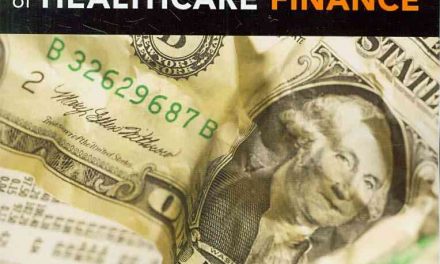Author: Bob Ehrlich
Publisher: Ben Bella Books – 241 pages
Book Review by: Paiso Jamakar
Bob Ehrlich has been a state legislator, a congressman representing the 2nd district of Maryland in the U.S. Congress from 1994 to 2001, and governor of that state from 2003 to 2007. He ran for governor again in 2010 but lost to the incumbent governor, Democrat Martin O’Malley. He is currently Maryland campaign chairman for the election of Republican Mitt Romney as the next president of the United States.
As governor of Maryland, Ehrlich focused on improvements in five areas: commerce, education, fiscal responsibility, health and the environment, and public safety. He had many accomplishments during his term. The unemployment rate in that state dropped from 4.5 percent in 2003 to 3.9 percent in 2006, and about 98,000 private-sector jobs were added. In his four years at the helm, Maryland’s jobless rate was about half a percent or more lower than the national unemployment rate.
Gov. Ehrlich’s education programs gave money to schools in poor areas and those where cost of living was higher. The first-ever public charter school was also established with his efforts. Funding for education during his term included the construction of 45 new schools and improvement of an additional 52existing schools.
He was opposed to raising taxes which would have negatively impacted companies. The firms were need as a source of revenue for the state government. He instead was in favor of placing slot machines in casinos and other places to create new revenue.
To encourage job creation in private business, he vetoed a bill that would have placed additional financial and work burdens on companies with more than 10,000 employees. That bill would have required companies to spend eight percent of payroll, or pay that amount to a state health fund for the uninsured. He also helped reduce pollution discharge by upgrading the water treatment plants for the Chesapeake Bay areas.
This book by Ehrlich, published in 2011, contains his ideas on turning America around from the road it is headed. It is his “road map to restoring America,” as the country heads to presidential elections in November 2012.
In a Foreword by former New York City Mayor Rudy Giuliani, he calls Ehrlich as “one of America’s most successful governors,” who fought a “hostile media” and control by Democrats of Maryland’s legislature, which opposed many of his proposals.
Giuliani points out Ehrlich’s successes as Maryland governor particularly in his reforms on the criminal justice system and on drug policy, his stewardship of that state’s environment, and his programs that helped people with disabilities.
Ehrlich recounts his experiences in his early years growing up in a blue-collar neighborhood of Arbutus, in Baltimore, Maryland from where he emerged and rose to become governor of the state. It was a place where college education was considered a luxury, and where many people worked for super-large employers such as Giant, Northrop Grumman and Walmart. It was a life filled with youthful joy, with his love of sports, including baseball, basketball, kickball, football and tackle football.
Many dinner-table conversations among family members centered on politics. From them arose the views and positions he formed – pro and con – on various issues. Over the years, his desire for instituting change grew. He has acted on that desire as a public servant in various capacities, and has numerous achievements under his belt.
Ehrlich is a firm believer in his views and a tough fighter as well, with many victories. As a matter of fact, 16 of the 17 chapters in his book are on fighting with various groups.
But they focus on issues he believes strongly in. For example Chapter 8 is entitled “Taking on Failing Education.” He recalls his first field trip during his last term as U.S. congressman in 2001 and a reading challenge he gave to students at an inner-city school in Baltimore. He asked about 30 students, mostly African-American, to read 60 books during their free time before the school year ended and their reward would be a pizza celebration of their collective accomplishment in a visit to his office in Washington D.C.
But before he left that school, the teacher pulled him aside and admonished him, asking him why did he place that challenge on the students, “when we both know they’re never going to read those books?” He was angered by that statement and he saw a living example in that teacher of what President George W. Bush had described as the “soft bigotry of low expectations.”
He had left that classroom seething with despair. If students are not challenged in school, how will they face challenges later in life, he asked himself. But months later, to his joy, he was informed that the students did meet his challenge, and he had never been happier before to throw a pizza party.
This visit and others to under-performing schools led Ehrlich to develop a mindset that a good-quality public education should be provided to all, but especially those “who have been dealt a difficult hand in life.”
He writes that this is “why it is so vital for every stakeholder – Republicans and Democrats, voters, parents and students, to continually challenge the teachers unions, and others in the education establishment to put kids first, even if it means competition form charter schools, or a merit-pay program based on performance over seniority, or the turning-over of a public school to a private vendor.”
The other chapters are on problems that exist in America and the groups that want to protect their financial and other interests to the detriment of the public good. Some of these besides failing education are on the mortgage meltdown, the failing war on drugs, the fiscal crisis and public pensions, and the living wage movement.
These problems not only persist but continue to grow worse. The biggest one of these, in my opinion, is the fiscal crisis of the Federal government. Most state governments continue to follow the example set at the national: deficit-spending and addition to debt. If governors mend their ways and demonstrate fiscal responsibility, most of the problems addressed in the various chapters can, in my view, be solved.





